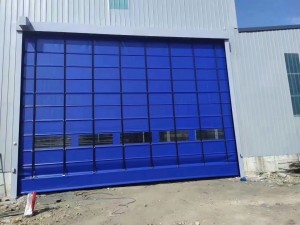Sliding doors are a wonderful addition to any home, providing a seamless transition between indoor and outdoor spaces and allowing natural light to flood in. Over time, however, gaps can form, compromising the door’s ability to insulate. These gaps can lead to drafts, heat loss, and even higher energy bills. In this blog post, we’ll explore five effective ways to fill gaps in your sliding door and restore its insulation efficiency. By implementing these techniques, you can ensure a comfortable and energy-efficient living space year-round.
1. Weatherstripping
Weatherstripping is a time-tested method of sealing gaps in sliding doors. Weatherstripping is available in a variety of materials, including rubber, vinyl, or foam, and can effectively stop air leaks. Measure the sliding door gap and choose the appropriate weatherstripping material. Carefully clean the door surface and apply weatherstripping adhesive along the edges. Press the weatherstripping firmly into place, making sure it’s well adhered. Once installed, your sliding doors will be protected from drafts and your home’s energy efficiency will be significantly improved.
2. Caulking
Caulking is another effective technique for filling gaps in sliding doors. It involves using a waterproof caulk, usually silicone caulk, to seal the opening. Before applying caulk, make sure the area is clean and dry. Use a caulk gun to carefully fill in gaps, ensuring a smooth, even surface. Once the caulk dries, it will form a strong seal and prevent air leakage. This method is particularly useful for smaller cracks or gaps that are not easily noticeable.
3. Windproof plug
Draft stoppers are a simple and inexpensive solution for filling gaps at the bottom of sliding doors. Typically made of foam or fabric, draft stoppers are placed along the length of the door to stop cold air from entering and hot air from escaping. It effectively eliminates drafts and acts as an additional barrier against noise and dust. Make sure you choose a draft stopper that matches the width of your sliding door. By installing draft stoppers, you can eliminate drafts and maintain a cozy atmosphere in your home.
4. Insulation film Insulating film is a cost-effective temporary solution for filling gaps in sliding doors during the colder months. The film acts as an additional layer of insulation, preventing heat loss and drafts. To install the membrane, clean your sliding door thoroughly and use double-sided tape to adhere the membrane along the edges. Stretch the film taut against the surface, then heat the film with a hair dryer to shrink it slightly for a wrinkle-free finish. Insulation film is an excellent option for those looking for an affordable solution without compromising on energy efficiency.
5. Professional assistance
If you have major gaps or considerations regarding the integrity of your sliding doors, it may be wise to seek professional help. An experienced contractor or installer can assess the condition of your sliding door, identify any potential issues, and recommend the best course of action. They may recommend repair or replacement of affected parts to ensure optimal insulation and use. Although this option may require an initial investment, it guarantees long-term benefits and you can rest assured that your sliding door has been restored to its full potential.
Filling the gaps in your sliding door is crucial to restoring its insulation efficiency. With simple and effective methods like weatherstripping, caulk, draft plugs, insulation film, or seeking professional help, you can eliminate drafts, increase energy efficiency, and create a more comfortable living environment. Take action today and enjoy the benefits of a well-insulated sliding door.
Post time: Nov-13-2023

